Digital Media or Digital Signage - how to?
“The newest technologies are more and more invading our lives” - this phrase has long become hackneyed, but it has not lost its fairness. Once advertising with a mustache macho, printed in pre-revolutionary newspapers, caused a persistent desire to buy something, and the first stone "billboards" appeared in ancient Rome. Now the video even with the most popular actor and the words “Well, try, well, really, this is very tasty!” Will not make any impression on the most picky consumer. And without advertising the present world, no matter how many people would want this, can no longer exist. Therefore, ten or fifteen years ago, information display devices began to appear, showing advertisements not for one specific person, but for everyone who can see this device. The simplest options are, for example, a board of departure and arrival at airports or “electronic queues”. But the possibilities of Digital Signage are not limited. More than ten years ago, the need for such a product (and it implies both hardware, software, content creation, and delivery services) became clear to Fujitsu. Today we will talk about Fujitsu inStorevision - a specialized portal that allows you to effectively manage any number of visual information endpoints.
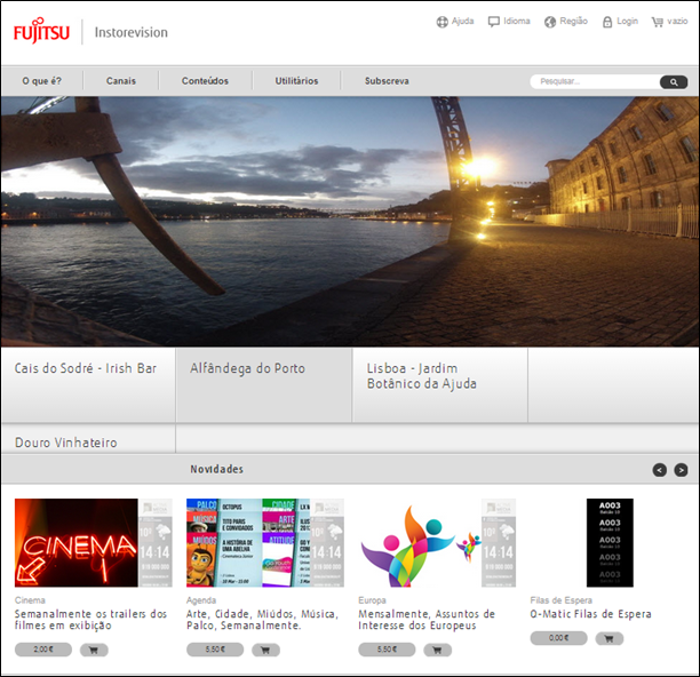
How is this question usually solved with the overwhelming number of companies that want to distribute their content to various points in different regions? A hub for distributed control of video screens is located at the point and a network is created to transfer content. At the same time, administrative responsibilities are delegated to a special employee at the location. However, almost all such employees perceive these duties as non-core, secondary and, therefore, optional. For this reason, any advertiser using such systems requires regular reporting: how many times and how long its content has been displayed, both static and dynamic. If something goes wrong, then all refer to the fall of the network, to the obstruction of 3G, etc. - in other words, there is no control!
')
Fujitsu went the other way. It offers its inStorevision product as a portal for serving any number of customers with any number of managed endpoints. Let's see how this approach works.
The portal provides the user with a system for creating content, distributing it to any place in the country and the world, and creating a schedule for displaying it. How to work with the portal?
1. Connect the player (it is better to use a supported model to minimize subsequent costs)

2. Choose content for your feed
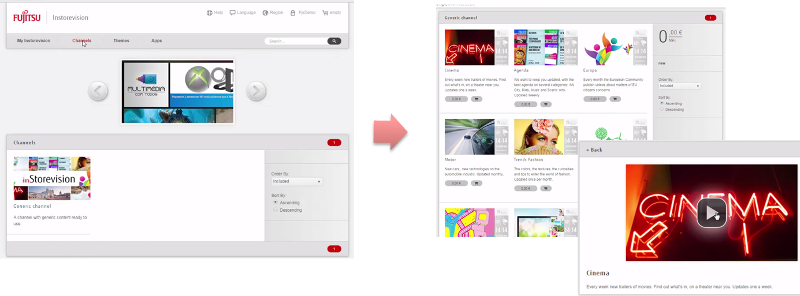
3. Download your content

4. Use the app to present dynamic content.
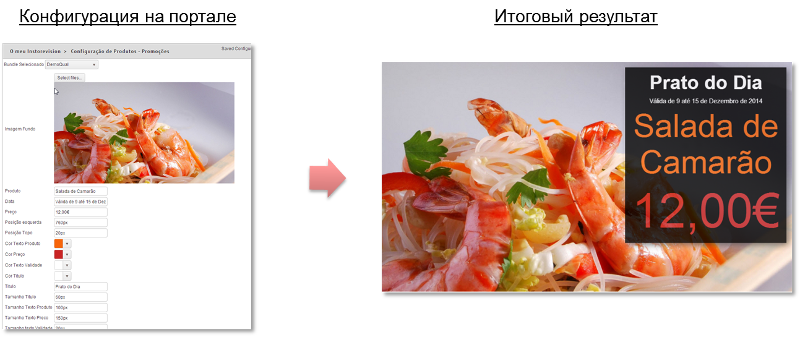
5. Create your schedule

6. Publish and enjoy the result

And what else can Fujitsu inStorevision?
• Integration with external systems

• Manage your player and processes
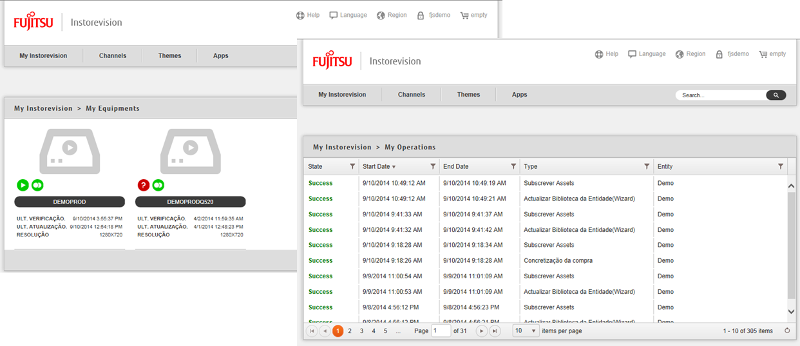
• InStorevision has the ability to integrate with existing equipment and queue management systems
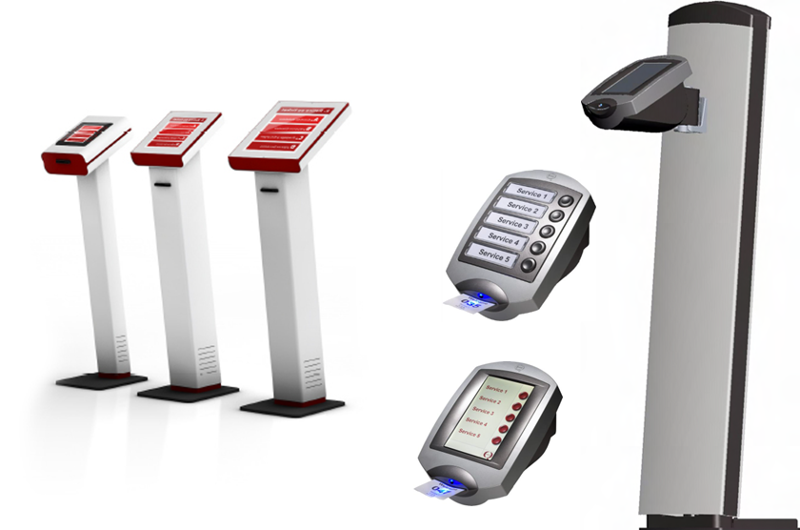
Thus, to work with the portal, it is enough to connect to it via the Internet, the rest occurs within the framework of the functional responsibility of the staff - or automatically according to the set schedule. In addition, the connection system based on the monthly fee allows you to use only those services, in the number and in those territories where it is necessary at a particular point in time. At the same time, an affiliate program allows you to flexibly distribute sales by customers and regions, as well as implement the first support line:
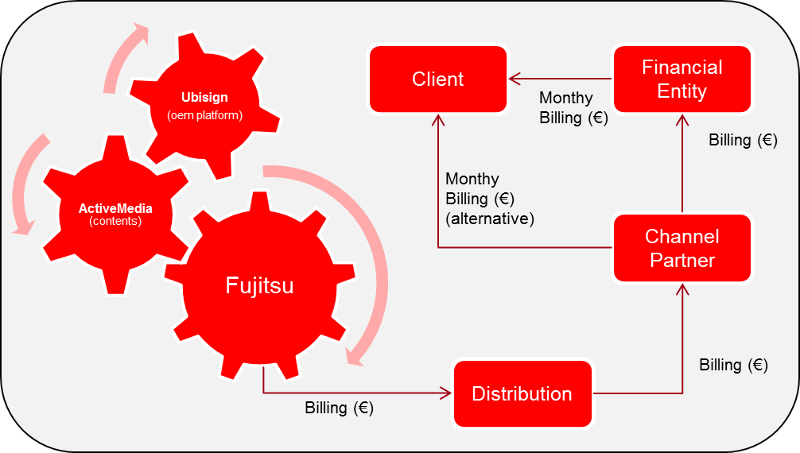
Information display screens can be installed in customer service areas, in waiting areas, in transit areas. It is possible to use the portal to display information of a specific customer on its territory or use it by advertising agencies for distributing content on commercial terms with various customers. The return is due to an increase in sales and the announcement of targeted messages, as well as by increasing loyalty and inspiring specific actions of the buyer or client. At the same time, with an increase in the number of connections, the costs of maintaining the content and service base are reduced.
Such projects are quite repayable in retail, services, transport, banks and other financial companies, in education, health care, sports facilities and sports halls, tourism - in a word, wherever you need to bring the interesting things to the end porter. and the necessary customer information.
In retail, this may be advertising specific products and manufactured goods, information about promotions, promo and "happy hours":

In bars and restaurants, such systems help to automate communication with the guest during the order, conduct campaigns timed to a specific time, providing sales segmentation by POS-terminals, regions, time of day and special events:

Similar methods are used in places where visitors gather, such as hotels, business centers, corporate events, shows, stadiums, theaters, parks, etc .:
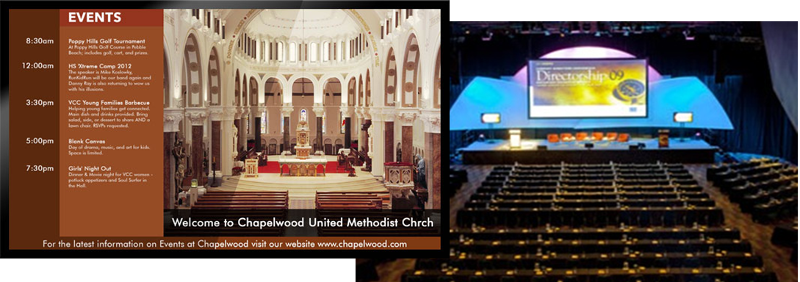
In educational institutions, with the help of inStorevision, corporate channels are created, channels for a differentiated audience (schoolchildren, students, teachers), recreational and information zones, libraries are equipped:

When used in the tourism industry, you can simply and effectively (as well as independently of the seller’s interests not always consistent with the corporate interests!) Convey to the client, for example, the “last hour” promo, a comprehensive offer, while accurately measuring the ROI will work:

In the gym inStorevision will help in the use of screens to bring visitors to the information about the rest, as well as sponsorship messages:

Let us hope that companies will not reach in a desire to convey information to the public from the story "Musicmaker" by Lloyd Biggl Jr. and other gloomy forecasters - after all, the future of innovation is not only what we offer, but also how we will introduce!

How is this question usually solved with the overwhelming number of companies that want to distribute their content to various points in different regions? A hub for distributed control of video screens is located at the point and a network is created to transfer content. At the same time, administrative responsibilities are delegated to a special employee at the location. However, almost all such employees perceive these duties as non-core, secondary and, therefore, optional. For this reason, any advertiser using such systems requires regular reporting: how many times and how long its content has been displayed, both static and dynamic. If something goes wrong, then all refer to the fall of the network, to the obstruction of 3G, etc. - in other words, there is no control!
')
Fujitsu went the other way. It offers its inStorevision product as a portal for serving any number of customers with any number of managed endpoints. Let's see how this approach works.
The portal provides the user with a system for creating content, distributing it to any place in the country and the world, and creating a schedule for displaying it. How to work with the portal?
1. Connect the player (it is better to use a supported model to minimize subsequent costs)

2. Choose content for your feed

3. Download your content

4. Use the app to present dynamic content.

5. Create your schedule

6. Publish and enjoy the result

And what else can Fujitsu inStorevision?
• Integration with external systems

• Manage your player and processes

• InStorevision has the ability to integrate with existing equipment and queue management systems

Thus, to work with the portal, it is enough to connect to it via the Internet, the rest occurs within the framework of the functional responsibility of the staff - or automatically according to the set schedule. In addition, the connection system based on the monthly fee allows you to use only those services, in the number and in those territories where it is necessary at a particular point in time. At the same time, an affiliate program allows you to flexibly distribute sales by customers and regions, as well as implement the first support line:

Information display screens can be installed in customer service areas, in waiting areas, in transit areas. It is possible to use the portal to display information of a specific customer on its territory or use it by advertising agencies for distributing content on commercial terms with various customers. The return is due to an increase in sales and the announcement of targeted messages, as well as by increasing loyalty and inspiring specific actions of the buyer or client. At the same time, with an increase in the number of connections, the costs of maintaining the content and service base are reduced.
Such projects are quite repayable in retail, services, transport, banks and other financial companies, in education, health care, sports facilities and sports halls, tourism - in a word, wherever you need to bring the interesting things to the end porter. and the necessary customer information.
In retail, this may be advertising specific products and manufactured goods, information about promotions, promo and "happy hours":

In bars and restaurants, such systems help to automate communication with the guest during the order, conduct campaigns timed to a specific time, providing sales segmentation by POS-terminals, regions, time of day and special events:

Similar methods are used in places where visitors gather, such as hotels, business centers, corporate events, shows, stadiums, theaters, parks, etc .:

In educational institutions, with the help of inStorevision, corporate channels are created, channels for a differentiated audience (schoolchildren, students, teachers), recreational and information zones, libraries are equipped:

When used in the tourism industry, you can simply and effectively (as well as independently of the seller’s interests not always consistent with the corporate interests!) Convey to the client, for example, the “last hour” promo, a comprehensive offer, while accurately measuring the ROI will work:

In the gym inStorevision will help in the use of screens to bring visitors to the information about the rest, as well as sponsorship messages:

Let us hope that companies will not reach in a desire to convey information to the public from the story "Musicmaker" by Lloyd Biggl Jr. and other gloomy forecasters - after all, the future of innovation is not only what we offer, but also how we will introduce!
Source: https://habr.com/ru/post/241355/
All Articles